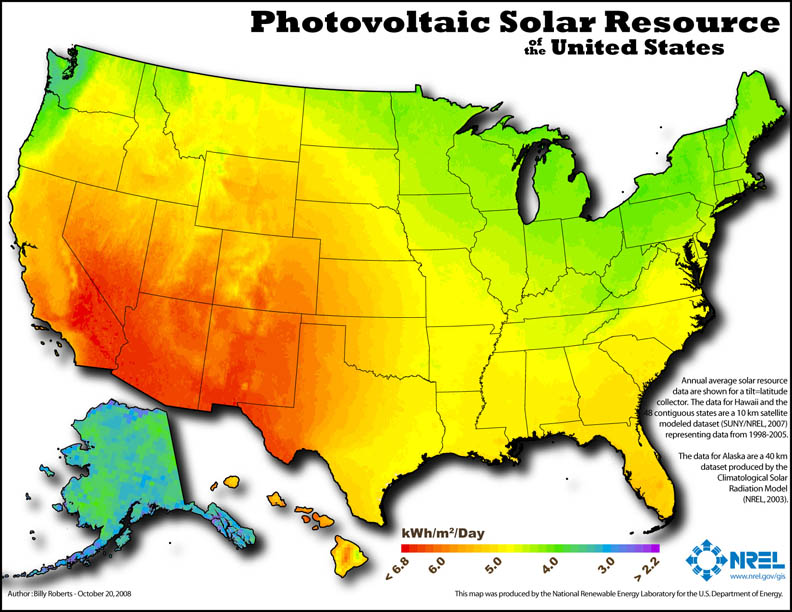forum
library
tutorial
contact

Data Centers and Distributed Renewables:
Two Peas in a POD
Kendra Tupper and Stephen BirdBusinessGreen.com, July 12, 2013
|
the film forum library tutorial contact |

|
Data Centers and Distributed Renewables:
Kendra Tupper and Stephen Bird |
 Last month Google hosted the event "How green is the Internet?" which brought together 100 experts from industry, academia, government and NGOs to explore emerging questions around the environmental impacts and benefits of the information and communications technology (ICT) sector. With the growing electrification and connectedness of our society -- including smartphones, laptop computers, cellular and Wi-Fi networks -- it's a timely topic.
It's commonly reported that 1 to 3 percent of U.S. electricity use (PDF) comes from data centers alone. In fact, this figure is actually much larger once energy use by access networks -- the fixed and wireless infrastructure that connects users and their devices to data centers -- is considered.
Last month Google hosted the event "How green is the Internet?" which brought together 100 experts from industry, academia, government and NGOs to explore emerging questions around the environmental impacts and benefits of the information and communications technology (ICT) sector. With the growing electrification and connectedness of our society -- including smartphones, laptop computers, cellular and Wi-Fi networks -- it's a timely topic.
It's commonly reported that 1 to 3 percent of U.S. electricity use (PDF) comes from data centers alone. In fact, this figure is actually much larger once energy use by access networks -- the fixed and wireless infrastructure that connects users and their devices to data centers -- is considered.
No one can say for sure (yet) exactly how much energy is consumed by access networks, but Bruce Nordman from Lawrence Berkeley National Laboratory took a shot at estimating U.S. network energy use in 2008 (PDF) and the Centre for Energy-Efficient Telecommunications recently estimated the energy use of mobile access networks (PDF). Their findings indicate that access networks may use an amount of energy on the same order of magnitude as data centers, and that this consumption is rapidly growing.
The Internet and mobile and broadband networks are here to stay. How can we make sure that the ICT sector uses clean, green energy, and uses it as efficiently as possible?
Data centers going green
Last year, the New York State Energy Research and Development Authority (NYSERDA) partnered with Clarkson University, AMD, HP, GE and others to undertake a project that will demonstrate the viability of renewables-powered data centers. Rocky Mountain Institute (RMI) recently has joined Clarkson researchers on this project, which envisions a network of distributed green data centers (DGDCs) co-located with renewable energy resources. Imagine many small, geographically distributed performance-optimized data centers (PODs) that can operate either with the electricity grid as an interconnected resource or as an off-grid electrical island.
At first, this might appear rather pedestrian; people in remote areas have operated off-grid for decades, right? But a major paradigm shift is at work: The PODs are designed to shift "load" by migrating server workloads to other PODs via fiber optic connections when local, inherently variable renewables aren't producing enough power, using these resources much more effectively. The PODs would be completely self-contained, with their only external interfaces being power input, network connections and potentially a connection for cooling and/or waste heat recovery.
The DGDC concept ties into the RMI's energy vision in these key ways:
Data centers and the ICT industry consume a lot of energy, and that energy usage is rapidly increasing. The industry is heavily reliant on the electricity grid for its power needs because, with the exception of large-scale hydro-electric power, the large geographic footprint of distributed renewables makes it difficult to integrate these sources at the site of conventional, large-scale data centers. The DGDCs concept could change all of that. By directly powering PODs with clean, renewable energy, this idea offers a potential solution to the issue of data center energy use faced by our increasingly digital society. While there are many issues to work out in the pilot projects to come, we are excited by the potential of the DGDCs concept and by the many ways it may complement and amplify our existing efforts.
learn more on topics covered in the film
see the video
read the script
learn the songs
discussion forum
